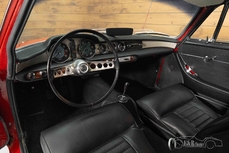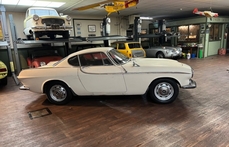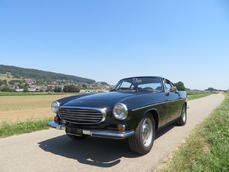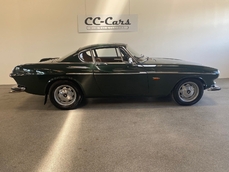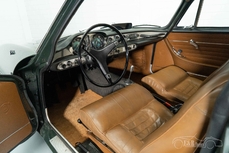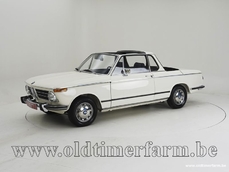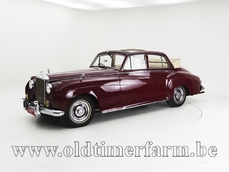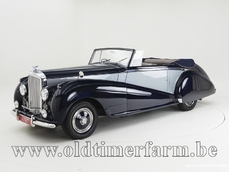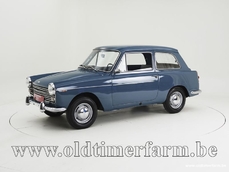Volvo P1800 ES '73 1973
Allgemeine Beschreibung :
The project of a Volvo sportscar was started in 1957 because Volvo wanted a sports car, despite the fact that their previous attempt, the P1900, had been a disaster, with only 68 cars sold. The man behind the project was an engineering consultant to Volvo, Helmer Pettersson, who in the 1940s was responsible for the Volvo PV444. The design work was done by Helmer's son Pelle Pettersson, who worked at Pietro Frua at that time. Volvo insisted it was an Italian design by Frua and only officially recognized that Pelle Pettersson designed it in 2009. The Italian Carrozzeria Pietro Frua design firm (then a recently acquired subsidiary of Ghia) built the first three prototypes, designated: P958-X1, P958-X2 and P958-X3. In December 1957 Helmer Petterson drove X1, (the first hand-built P1800 prototype) to Osnabrück, West Germany, headquarters of Karmann. Petterson hoped that Karmann would be able to take on the tooling and building of the P1800. Karmann's engineers had already been preparing working drawings from the wooden styling buck at Frua. Petterson and Volvo chief engineer Thor Berthelius met there, tested the car and discussed the construction with Karmann. They were ready to build it and this meant that the first cars could hit the market as early as December 1958. But in February, Karmann's most important customer, Volkswagen VAG, forbade Karmann to take on the job. They were afraid that the P1800 would compete with the sales of their own cars, and threatened to cancel all their contracts with Karmann if they took on the coachbuilding of this car. This setback almost caused the project to be abandoned. Other German firms NSU, Drautz and Hanomag were contacted but none of them were selected because Volvo did not believe these firms met their manufacturing quality control standards. It began to appear that Volvo might never produce the P1800. This motivated Helmer Petterson to obtain financial backing from two financial firms with the intention of buying the components directly from Volvo, and marketing the car himself. At this point Volvo had made no mention of the P1800 and the factory would not comment. Then a press release surfaced with a photo of the car, putting Volvo in a position where they had to acknowledge the car's existence. These events influenced the company to renew its efforts, the car was presented to the public for the first time at the Brussels Motor Show in January 1960 and Volvo turned to Jensen Motors whose production lines were under capacity, and they agreed to a contract of 10,000 cars. The Linwood, Scotland, body plant of manufacturer Pressed Steel was in turn contracted by Jensen to create the unibody shell, which then shipped via rail to be assembled at Jensen in West Bromwich, England. In September 1960, the first production P1800 (for the 1961 model year) left Jensen for an eager public. In 1972 came the last model, the 1800ES, a coupé station wagon or what the British would call a shooting-brake version with an all-glass tailgate. The final design was chosen after two prototypes had been built by Coggiola and Pietro Frua. Frua's very unusual looking prototype, Raketen ("the Rocket", on the right), currently resides in the Volvo Museum. Both of the Italian prototypes were considered too futuristic, and instead in-house designer Jan Wilsgaard's proposal was accepted. The ES engine was downgraded to 125 bhp (92 kW) by reducing the compression ratio with a thicker head gasket (engine variant B20F); although maximum power was slightly down the engine was less "peaky" and the real-world performance was actually improved. The ESs rear backrest folded down to create a long flat loading area. In addition to the usual four-speed plus overdrive manual transmission, a Borg-Warner three-speed automatic was also available in the P1800ES. With stricter American safety and emissions standards looming for 1974, Volvo did not see fit to spend the considerable amount that would be necessary to redesign the small-volume P1800 ES. Only 8,077 of the ES were built in its two model years. Specifications Bodywork Length: cm (in): 435 (171.3) Width: cm (in): 170 (66.9) Height: cm (in): 128 (50.4) Wheelbase: cm (in): 245 (132) Weight: kg (lb): 1220 (2690) Mechanics. Displacement: straight four 1986 cc (121 cu in), front-mounted Valve gear: 8 Fuel system: Bosch injection Gearbox: 4-speed automatic Driven wheels: rear-wheel drive Maximum power: 124 hp at 6000 rpm Maximum torque: 1678 Nm at 3500 rpm Maximum speed: 182 km/h (113 mph)
http://www.oldtimerfarm.be/en/collection-cars-for-sale/5066/volvo-p1800-es-73.php
1973 Volvo P1800 ES '73 is listed verkauft on ClassicDigest in Aalter by Oldtimerfarm Dealer for €17000.
Fakten der Auto
Karosserietyp : Auto Marke : Volvo Modell : P1800 Ausführung : ES '73 Hubraum : 0.0 Modelljahr : 1973 Lage : Aalter
Verkauft
Angaben Zum Verkäufer
Verkauft
People who viewed this Volvo P1800 also viewed similar Volvo listed at ClassicDigest
Other cars listed for sale by this dealer
über Volvo P1800
Der Volvo P1800 ist absolut eine bemerkenswerte Ergänzung zu Volvos Geschichte, die aufgrund seines schlanken Designs und seiner sportlichen Eigenschaften oft als "Nordic Ferrari" bezeichnet wird. Hier ist ein Überblick über seine Bedeutung in Volvos Geschichte:Einführung des P1800: Der Volvo P1800 wurde 1961 auf dem Genfer Autosalon vorgestellt. Es war Volvos erster Sportwagen und zielte darauf ab, Enthusiasten anzusprechen, die eine Mischung aus Leistung und Eleganz suchten.
Styling und Design: Der P1800 wurde von Pelle Petterson von der italienischen Designfirma FRUA entworfen und hatte ein stilvolles und kurvenreiches Design und unterscheidete es von Volvos utilitaristischen Modellen. Seine lange Kapuze, anmutige Linien und charakteristische hintere Flossen trugen zu ihrem faszinierenden Erscheinungsbild bei.
Pop -Culture -Ikone: Der P1800 wurde weiter anerkannt, da es in der TV -Serie "The Saint", wo Roger Moores Charakter Simon Templar, prominent vorgestellt wurde, einen weißen P1800 fuhr. Diese Belichtung erhöhte das Profil und die Popularität des Autos.
Evolution und Varianten: Das ursprüngliche Modell war der P1800, gefolgt von den P1800s mit einem leistungsstärkeren Motor. Später wurden die P1800E- und P1800Es (eine sportliche Dreh-Brems-Version) eingeführt, wodurch die Aufstellung weiter diversifiziert wurde.
Leistung und Technologie: Der P1800 wurde von einem robusten und zuverlässigen 1,8-Liter-Inline-Four-Motor angetrieben, was für seine Zeit eine anständige Leistung lieferte. Seine Mechaniken wurden als robust angesehen und passte Volvos Ruf für Haltbarkeit und Sicherheit an.
Vermächtnis und Einfluss: Der P1800 hat einen besonderen Platz in der Geschichte von Volvo und zeigt die Fähigkeit der Marke, einen Sportwagen zu produzieren, der die skandinavische Zuverlässigkeit mit stilvollem Design und respektabler Leistung kombinierte. Sein Einfluss ist in nachfolgenden Volvo -Modellen zu beobachten, insbesondere in Bezug auf Designelemente und die Verfolgung sportlicherer Varianten innerhalb der Aufstellung.
Der Volvo P1800 bleibt ein beliebtes Klassiker unter Enthusiasten für sein unverwechselbares Design, seine kulturelle Bedeutung und eine Verkörperung von Volvo's Streifzug in den Sportwagenmarkt und präsentiert eine andere Seite als das typischerweise sicherheitsorientierte Bild der Marke.
